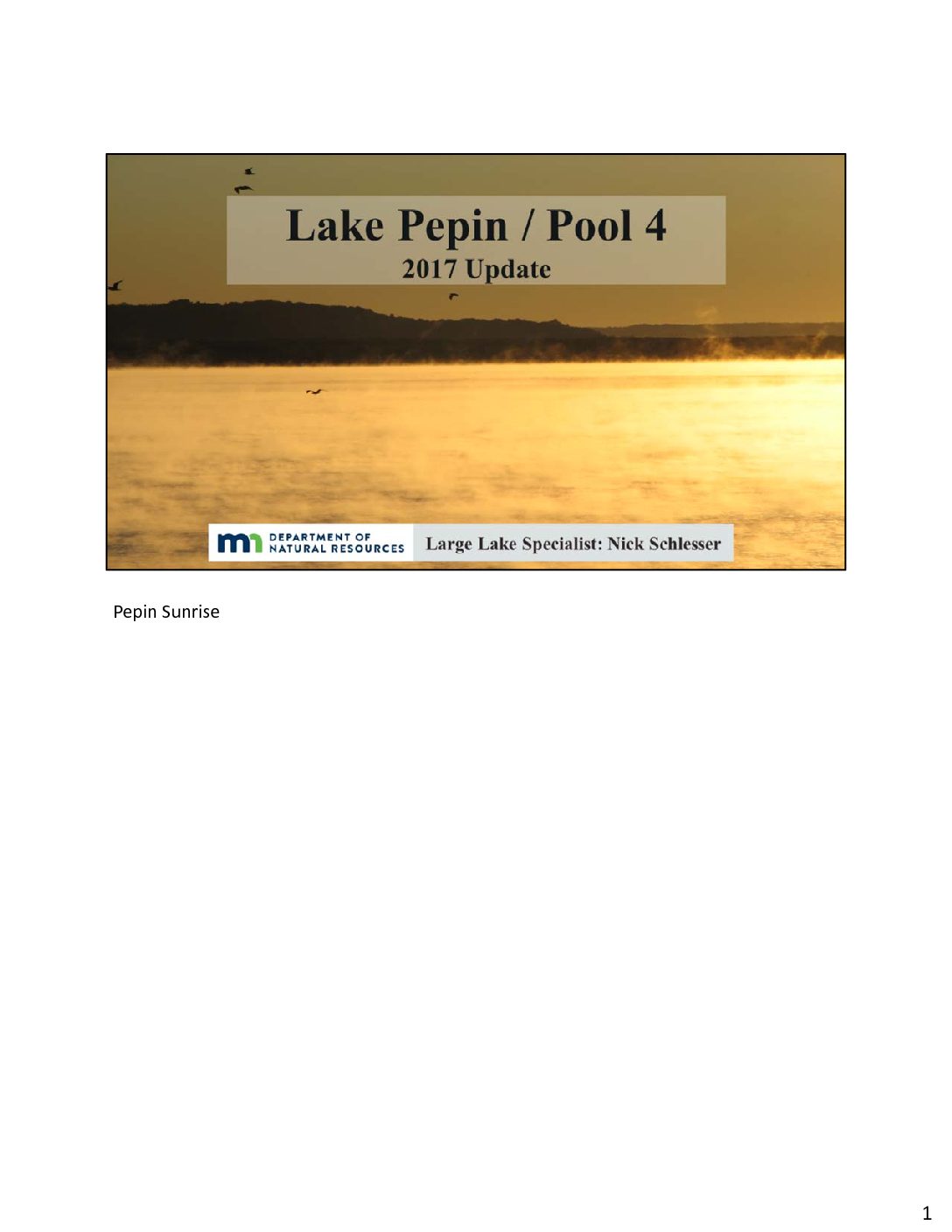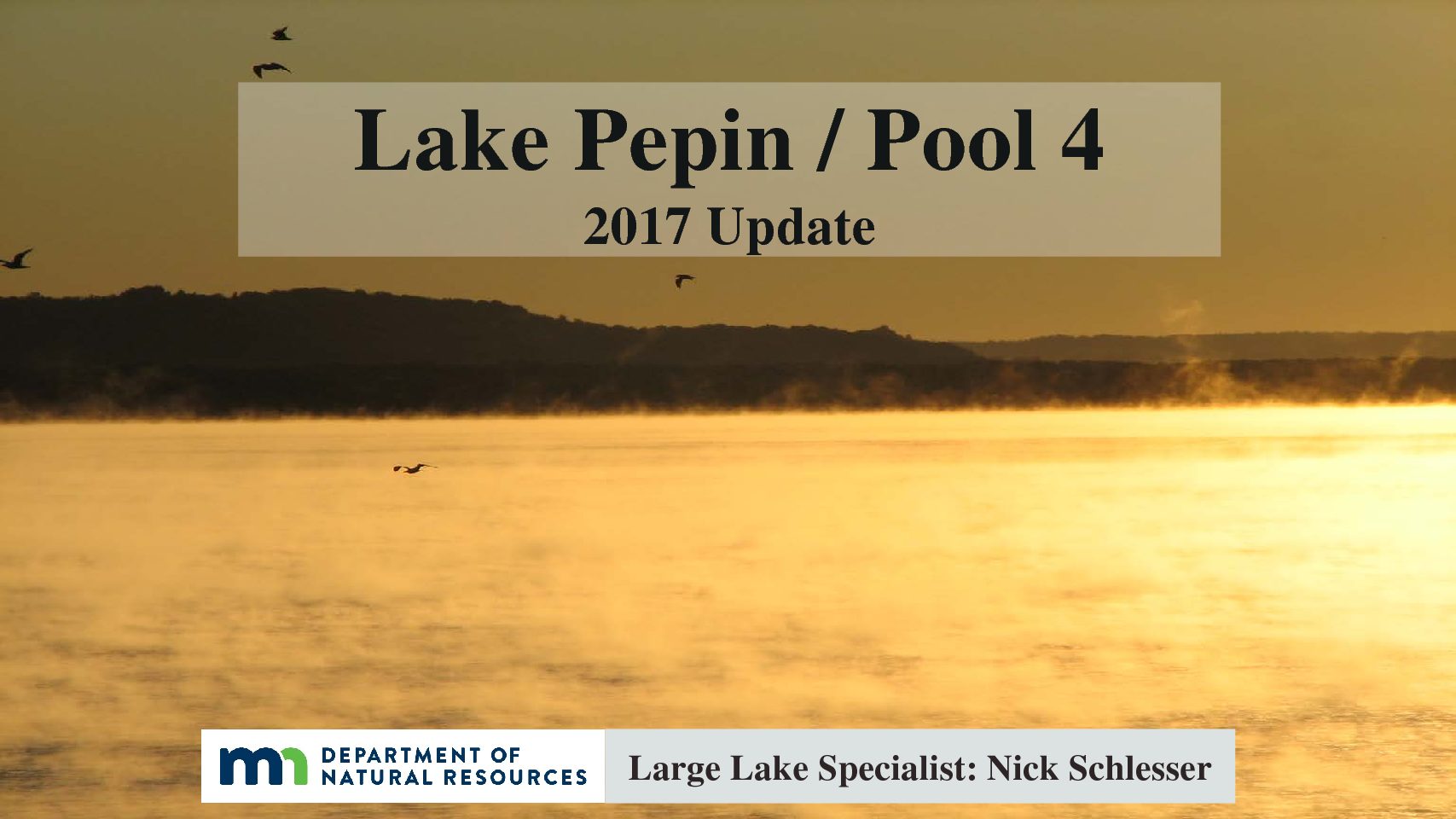Hello all,
Sorry for the delay getting the presentation out this year. We decided to split it into two sections this time. Attached here you will find a PDF containing the quick Lake Pepin/Pool 4 update I provided at the February 5th, 2018 Walleye Searchers Meeting in Rochester as well as the answers to some of the questions I received prior to the presentation.
I also presented some information related to MN DNRs efforts with the WI DNR and now the IA DNR as well to carry out a review of border water regulations. We have been working on that portion of the presentation, and I hope to have it posted to IDO by the end of the week. It hopefully contain a bit more information than the one presented on the 5th, but we didn’t want to hold the update portion of the presentation any longer.
As always feel free to contact me directly with any questions.
Thanks for your interest,
Nick

